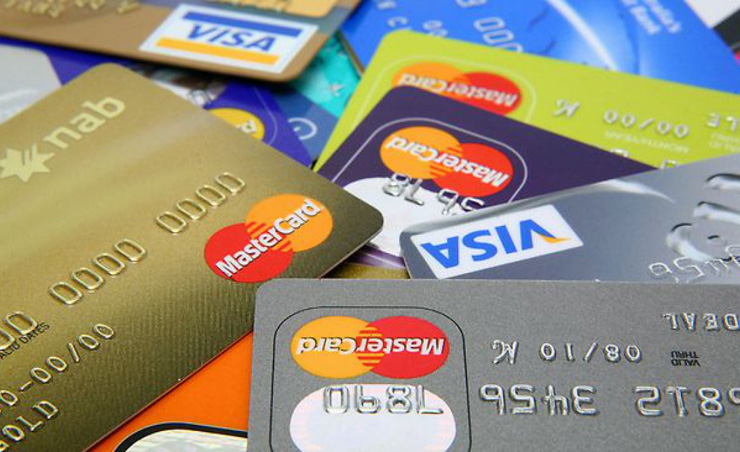As a Financial Consultant and Advisor to many of my faithful clients, I have seen firsthand the negative effects of excessive debt, specifically credit card debt can have on people’s lives. In today’s day and age, buying things on credit is an afterthought and is usually spoken chalked up as being “convenient” when it comes to purchases. Excessive credit card spending is an addiction that most never shake, let alone identify as a real problem. As they say, “you can’t solve a problem if you don’t think you have one”.
Through the booms, busts, and recessions of the last 15 years, U.S. credit habits have been remarkably consistent. According to a recent study from the Federal Reserve Bank of Boston, most people carry over a balance from month to month, and they eagerly gobble up any additional credit their card-issuers offer.
Credit card debt, like all other debt adds up fast. Consumers owed a total of $936 billion in credit-card and other revolving debt (line of credits) as of and up to December 2015. They’ve added $103 billion since April 2011, but they still have less revolving debt than just before the financial crisis in 2008, when they owed $1.02 trillion.
To see how individual Americans’ relationships to credit cards have changed through time, researchers at the Boston Fed’s Consumer Payments Research Center analyzed a huge data set, here are some findings:
The Typical Person Is Always in Credit Card Debt
About 35 percent of those aged 25 to 50 with credit cards are “convenience users,” who pay off their balances each month. The majority, whom researchers call “revolvers,” carry debt forward from month to month and usually pay high interest charges in the process, ranging anywhere between 15 to 30 percent!
Americans don’t really taper their credit-card borrowing until their fifties. Even at age 70, 45 percent of credit card users aren’t paying off their credit cards each month. And the typical 80-year-old still has more than $600 on a credit card. “The median person is always borrowing…” the study concludes.
Debt Addiction Begins in Your Twenties
Between ages 20 and 30, Americans rush to embrace credit card debt. Their credit card limits jump about 450 percent in that time, while their debt rises almost as quickly, by more than 300 percent.
Young adults are all but consumed with the rampant mentality of “here and now”, where they want everything on their whims and fancies, which is attained more often than not…you guessed it – CREDIT. The concept of saving and putting money aside is all but a prehistoric mindset. In fact whether someone’s making minimum wage to those making upwards of six figures; all have an extremely hard time with the concept of saving (stay tuned for another article on how little we actually save and how to start doing so).
Old Habits Die Hard
As we get older and more mature, we still rely heavily on credit cards. While 20-year-olds use more than half their available credit on average, 50-year-olds use almost 40 percent. 50 years older and with ample more life experience and on average only a 10% decrease in the use of available credit limit? That is abysmal!
Some try to curb their spending and reliance on credit, but studies show that usually lasts for a maximum of two years, whereas after that, an individual’s overreliance on credit reverts back to its previous pattern.
If You Can Borrow More, You Probably Will
People borrow more in good times and less during recessions. The driving factor isn’t our mood about the economy. Borrowing seems driven by our credit limits. When banks offer us a higher limit, we use it. When they cut us off, we tighten our belts.
Banks are constantly adjusting how much credit they give customers. The average credit-card limit rose about 40 percent from 2000 to 2008, and then plunged about 40 percent during 2009. How odd is it that we come to our senses only AFTER we’ve been burnt?
Credit limits have the biggest effects on people who carry debt forward from month to month. When offered a 10 percent increase in credit limits, these “revolvers” subsequently increase their debt by 9.99 percent, the study finds. In other words, revolvers—the majority of U.S. consumers—typically use almost every extra cent offered by their credit card issuers.
These are all striking statistics, but you may be asking yourself “what can I do about it?” Lucky you, I have outlined a few steps to take in order to control and mitigate the overuse and overreliance on credit card debt and debt in general:
1) Death To Debt
Stay vigilant in paying off outstanding debt. Whether it be credit card, student loan, or money you owe your grandma from when you were 14. Keep track of those that owe you and those you owe, it will only make your life easier in the long run. You will realize how paying off every dollar is effectively saving you money it would cost to service that dollar.
2) Budget
Complete a basic monthly budget to keep track of your cash flow. It can be as basic or as extensive as you like. The point is to be mindful of how much money is coming in and how much money is coming out.
3) Pay Yourself First
Commit to setting aside a nominal amount to save for your future self. It doesn’t have to be much at first, but it should be something. You can put your savings under your mattress, in a savings account at your local bank or best of all, for my more savvy clients I like to recommend we set up an investment account so that your contributions go into a basket of stable stocks/equities which in the long term can make you money!
4) Have Some Self Control
Majority of us lack discipline in our lives, especially when it comes to our finances. Being haphazard with your hard earned money is like shooting yourself in the foot and expecting to run a mile thereafter. Exercise caution when it comes to making purchases. Remember, there is a difference between the things you WANT and the things you NEED. Learn to tell the difference between the two.
Final Thoughts
Everything I have stated above may seem like common sense, but if there is one thing I can say without a doubt, it’s that common sense isn’t so common after all. The ball is in your court and you have the power within you to take control of your life and achieve Financial Freedom.



